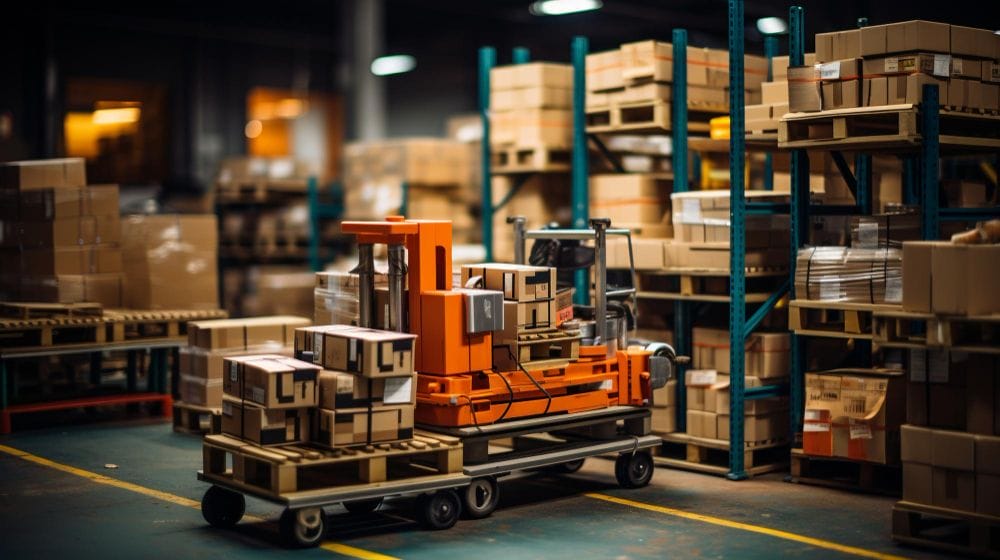Are you an avid trader looking to get an edge in the market? If so, you might want to keep an eye on Eurozone Industrial Turnover. This often-overlooked metric can provide invaluable insights into the economic health of the Eurozone, and by extension, help inform your trading decisions. Let’s dive deep into what Eurozone Industrial Turnover is, why it matters, and how you can leverage it in your trading strategy.
What is Eurozone Industrial Turnover?
Eurozone Industrial Turnover refers to the total revenue generated by companies within the industrial sector across the Eurozone. This includes manufacturing, mining, and utilities. Essentially, it’s a measure of the total value of goods sold by these companies. Unlike other economic indicators that can be more abstract, industrial turnover gives us a tangible sense of economic activity.

Why Should Traders Care About Eurozone Industrial Turnover?
If you’re wondering why you should bother with another economic indicator, consider this: Eurozone Industrial Turnover provides real-time data on the demand for industrial goods. When turnover is up, it indicates strong demand and economic vitality. Conversely, a decline can signal economic slowdowns. For traders, these shifts can be crucial signals for making informed trading decisions.
The Connection Between Industrial Turnover and Market Trends
Think of the Eurozone Industrial Turnover as the heartbeat of the industrial sector. When the heartbeat is strong, the entire body (in this case, the economy) thrives. Investors and traders often use this indicator to gauge the overall economic environment. For instance, a rising industrial turnover might suggest that companies are expanding, leading to higher stock prices. On the flip side, declining turnover can be a warning sign of potential economic trouble ahead.
How Eurozone Industrial Turnover Affects Currency Markets
Currency traders should pay close attention to Eurozone Industrial Turnover. A robust industrial sector typically strengthens the euro as it reflects a healthy economy. Conversely, weak turnover can lead to a weaker euro. By monitoring these trends, forex traders can make more strategic decisions regarding euro trades.
Eurozone Industrial Turnover vs. Other Economic Indicators
You might be wondering how Eurozone Industrial Turnover stacks up against other indicators like GDP or unemployment rates. While GDP provides a broad overview of economic performance, industrial turnover offers a more immediate snapshot of economic activity. Unemployment rates, on the other hand, lag behind economic shifts. In contrast, industrial turnover can give traders a quicker read on economic changes.
Recent Trends in Eurozone Industrial Turnover
In recent years, Eurozone Industrial Turnover has seen its fair share of ups and downs. The COVID-19 pandemic, in particular, had a significant impact. Many industrial sectors faced disruptions, leading to a decline in turnover. However, as economies began to reopen, we saw a resurgence in industrial activity. Keeping an eye on these trends can help traders anticipate market movements.
Interpreting Industrial Turnover Data
So, how do you make sense of Eurozone Industrial Turnover data? It’s not just about whether the numbers are up or down. Traders need to look at the rate of change, compare it to historical data, and consider external factors such as political events or global economic conditions. By doing so, you can develop a more nuanced understanding of what the data means for your trading strategy.
Using Eurozone Industrial Turnover in Your Trading Strategy
Ready to incorporate Eurozone Industrial Turnover into your trading strategy? Start by keeping a close watch on monthly reports. Look for trends and patterns, and consider how they align with other economic indicators. Use this data to inform your buy and sell decisions, particularly if you’re trading stocks or forex. Remember, the goal is to stay ahead of the market, and this data can provide a valuable edge.
Common Pitfalls to Avoid
While Eurozone Industrial Turnover is a valuable tool, it’s not without its pitfalls. One common mistake is relying solely on this indicator without considering the broader economic context. Additionally, short-term fluctuations can be misleading, so it’s important to focus on long-term trends. Lastly, always be aware of data revisions, as initial reports can sometimes be adjusted.
Case Study: How Industrial Turnover Predicted Market Movements
Let’s look at a real-world example. In 2020, Eurozone Industrial Turnover plummeted due to the pandemic. Savvy traders who recognized the significance of this data anticipated a downturn in the euro and adjusted their positions accordingly. As the turnover began to recover in 2021, those same traders could capitalize on the strengthening euro. This case study underscores the importance of staying informed and proactive.
Tools and Resources for Monitoring Eurozone Industrial Turnover
To stay on top of Eurozone Industrial Turnover, you’ll need access to reliable data and analysis tools. Websites like Eurostat provide monthly reports, while financial news outlets offer expert commentary. Additionally, trading platforms often have built-in tools for tracking economic indicators. Make sure you’re leveraging these resources to stay informed.
Expert Opinions on Eurozone Industrial Turnover
Experts agree that Eurozone Industrial Turnover is a crucial economic indicator. Many financial analysts view it as a leading indicator of economic health. By understanding and monitoring this metric, traders can gain valuable insights into market trends and make more informed decisions. Don’t just take our word for it—listen to the experts and incorporate their insights into your strategy.
Conclusion
In conclusion, Eurozone Industrial Turnover is a powerful tool for traders looking to make informed decisions. By understanding what it is, why it matters, and how to interpret the data, you can gain a valuable edge in the market. Remember to consider the broader economic context, avoid common pitfalls, and stay informed with reliable data sources. With this knowledge in hand, you’ll be better equipped to navigate the complexities of trading and achieve your financial goals.
FAQs
1. What is Eurozone Industrial Turnover?
Eurozone Industrial Turnover refers to the total revenue generated by companies within the industrial sector across the Eurozone, including manufacturing, mining, and utilities.
2. Why is Eurozone Industrial Turnover important for traders?
It provides real-time data on the demand for industrial goods, helping traders gauge economic health and make informed decisions.
3. How does Eurozone Industrial Turnover affect the euro?
A robust industrial sector typically strengthens the euro, while weak turnover can lead to a weaker euro.
4. What are some common pitfalls when using industrial turnover data?
Common mistakes include relying solely on this indicator without considering the broader economic context and focusing on short-term fluctuations.
5. Where can I find reliable Eurozone Industrial Turnover data?
Reliable data can be found on websites like Eurostat and financial news outlets, as well as through trading platforms with built-in tracking tools.




